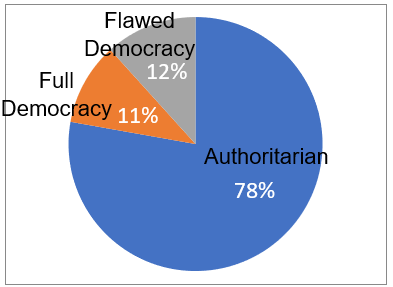Steel Products Prices North America

CRU: Responsible Production — More Than Just Carbon Intensity
Written by Greg Wittbecker
October 28, 2022
The Global Arrangement on Sustainable Steel and Aluminum
Just over a year ago, on Oct. 3, 2021, the EU and the US signed an agreement to negotiate on carbon intensity and global overcapacity in both steel and aluminum.
This lofty goal seemed to have been trumped by the agreement that the US suspended Section 232 tariffs on steel and aluminum, with the EU reciprocating on US imports. The tactical commercial considerations got all the attention.
Why raise this now? The ongoing issues with Russia’s action in Ukraine and China’s slippage back into overproduction of aluminum warrant fresh attention. For a sustainable product we must consider more than just how we make it: It must be a comprehensive approach to the environment in which it is made.
![]()
The Ukraine War and the Debate Over How to Manage Russian Exports
The LME consultation period for discussing options for dealing with Russian metal expires on Oct. 28. Early feedback from attendees at the annual LME Dinner Week suggest the LME is leaning towards doing nothing now. This comes despite strong statements from Alcoa, Hydro, and Aurubis (the major EU copper producer) asking for Russian aluminum and copper to be delisted.
The LME clearly will not act unless they have protective cover from the US or EU on sanctions, fearing legal action by the Russians and their counterparties holding major exposure with Russian metal.
Geopolitical justification for delisting the Russians is not going to carry the argument with the LME. It will be left to the private sector to self-sanction on ESG grounds
China Reverting to Old Bad Habits in Aluminum
Despite recent enforced curtailments in Sichuan and Yunnan provinces, China is raising primary aluminum production even as domestic demand has stalled and the world ex-China is contemplating recession tanking demand there.
Chinese production will rise 3.9% in 2022 to 40.1 million tons. At the same time, with LME prices at $2,150 per ton, virtually the entire sector is cash negative. However, voluntary curtailments are not likely to come quickly, especially in a country seeing its GDP stunted by its zero-tolerance policy on Covid. No one is going to put people on the street in this environment. China’s propensity to subsidize heavy industry continues unabated.
At the same time, China is using its reliable playbook to compensate for poor domestic trading conditions…it is exporting its surplus.
Chinese exports of semi-fabricated aluminum through September were 5.2 million tons, or an annualized run rate of 6.68 million tons. Exports are running 27.8% ahead of 2021’s pace.
The Perfect Storm: Russian Metal Being Transformed in China
Russian problems with self-sanctioning of its exports could find a solution in China, if the Chinese decide to play along…for a price!
Cheap Russian primary metal going to China could be transformed into rolled products, extrusions, and a host of other semi-fabricated or fabricated goods and then re-exported. China could buy the metal very cheaply and rationalize closing its money-losing smelters, even being able to retrain the displaced labor force into other sectors of the economy. They also could tout the fact they were using low-carbon intensity aluminum to make the products. China and Russia teaming up for state-sponsored industrial subsidization.
Why Does Sustainable Production Matter Now?
The Russian problem is geopolitical, not simply dollars and sense or supply. Any company who intends to truly adhere to ESG standards must be uneasy handling Russian metals now.
If ESG is ever going to work, here is the decisive test. The Visual Capitalist group has done decent work on studying democracy around the world and their latest work is provocative.

If we look at the aluminum world alone, and compare where the 15 largest producers of aluminum are domiciled, it is a scary picture:

Russia and China both fall into the authoritarian category. The UAE, Bahrain, Saudi Arabia, and Iran join them. These six countries comprise 50 million tons of the current global production. Just 6.7 million tons of production can be attributed to full democracies (Canada, Norway, Iceland, and Australia). The US is considered a flawed democracy (anyone surprised?) and this category represents 7.5 million tons of production.
Wake-Up Call for the ESG Movement
Realistically, no one expects to see the aluminum (or steel) market suddenly stop buying metal from those authoritarian states. We already have mortgaged ourselves to the Chinese on rare earths and are buying battery metals from some very dodgy countries. However, at some point very soon, the world must decide that price and carbon intensity is not the sole criteria for sourcing its key materials.
The Ukraine War has brought this into sharp focus. China’s increasingly hard-line approach to Taiwan and its ambitions in Asia are another reminder that you cannot escape geopolitics.
It will be a tough economic decision to buy your aluminum or steel exclusively from non-authoritarian countries, but do you want to explain why you are not when you tout ESG?
By Greg Wittbecker, Advisor, CRU Group, Gregory.Wittbecker@crugroup.com
Greg Wittbecker
Read more from Greg WittbeckerLatest in Steel Products Prices North America

SMU Price Ranges: Sheet and plate steady ahead of Independence Day
Sheet and plate prices were little changed in the shortened week ahead of Independence Day, according to SMU’s latest check of the market.

Nucor maintains plate prices, opens August order book
Nucor aims to keep plate prices flat again with the opening of its August order book.

Nucor CSP remains level at $900/ton
Nucor maintained its weekly list price for hot-rolled (HR) coil this week, following two consecutive increases.

Cliffs raises prices, seeks $950/ton for July spot HR
Cleveland-Cliffs plans to increase prices for hot-rolled (HR) coil to $950 per short ton (st) with the opening of its July spot order book. The Cleveland-based steelmaker said the price hike was effective immediately in a letter to customers dated Monday.

HRC vs. prime scrap spread widens in June
The price spread between HRC and prime scrap widened in June.
